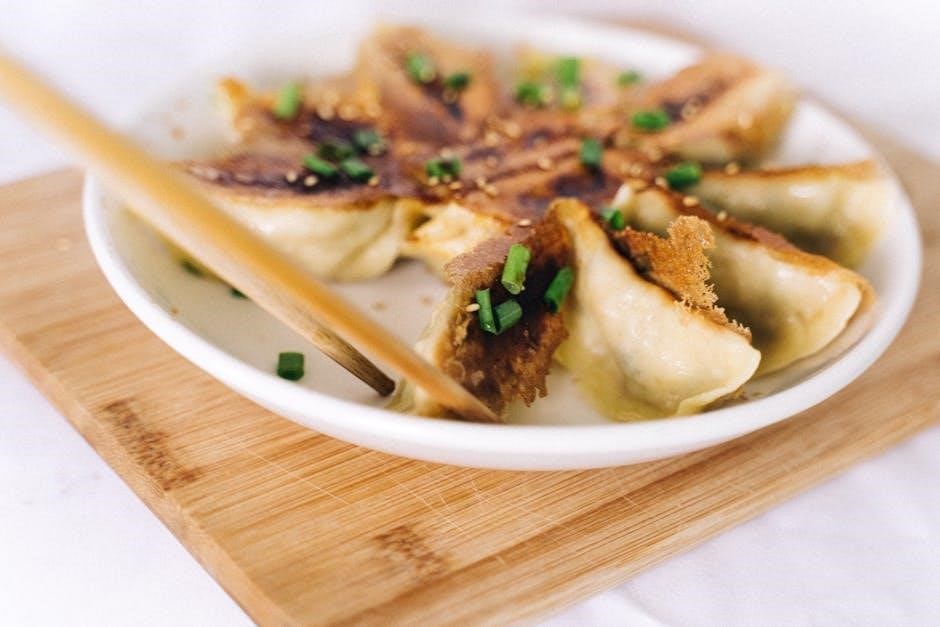Grease fittings are essential components for lubricating mechanical parts․ Standardized sizes ensure compatibility, with common types like Zerk fittings․ Proper sizing is crucial for effective lubrication using grease guns․
Understanding the Importance of Grease Fittings
Grease fittings play a critical role in maintaining machinery by delivering lubricant to moving parts, reducing wear and tear․ Proper lubrication prevents friction, corrosion, and overheating, ensuring smooth operation․ Zerk fittings, a common type, are designed for easy grease application․ Using the right size ensures efficient lubrication, preventing over- or under-lubrication issues․ Regular maintenance with grease fittings extends equipment lifespan and enhances performance, making them indispensable in industrial and automotive applications․
Overview of Grease Fitting Size Charts
Grease fitting size charts serve as reference guides for selecting the correct fitting size․ They typically include measurements like thread diameter, pitch, and length․ Common thread types, such as 1/8 NPT or 1/4-28 SAE-LT, are often highlighted․ These charts help ensure compatibility with grease guns and prevent issues like over- or under-lubrication․ By providing standardized sizing information, they simplify the process of choosing the right grease fitting for specific applications, ensuring proper lubrication and equipment maintenance․
How to Read a Grease Fitting Size Chart
Identify thread diameter, pitch, and length from the chart․ Align measurements with common thread types like 1/8 NPT or 1/4-28 SAE-LT to determine the correct fitting size․
Key Measurements and Specifications
Key measurements include thread diameter, pitch, and length․ Standard sizes like 1/8 NPT or 1/4-28 SAE-LT are common․ Ensure proper thread alignment for effective lubrication․ Measure using a thread gauge or compare against a size chart․ Port size and material type (e․g․, steel, stainless steel, brass) are also critical․ Always match measurements with the chart to select the correct fitting for optimal performance and longevity․
- Thread diameter and pitch must align with equipment requirements․
- Length ensures proper grease delivery without overextension․
- Material compatibility prevents corrosion or wear․
Interpreting Thread Sizes and Types
Thread sizes on grease fittings are standardized, with common types like 1/8 NPT or 1/4-28 SAE-LT․ These designations indicate diameter and pitch․ NPT (National Pipe Tapered) threads are tapered for a tighter seal, while SAE-LT (Society of Automotive Engineers ⎼ Light Duty) threads are straight and finer․ Always match the fitting’s thread type to the equipment’s port for proper compatibility and sealing․ Measure using a thread gauge or refer to a size chart for accurate identification․
- Thread type (e․g․, NPT, SAE-LT) determines compatibility․
- Pitch refers to the distance between threads․
- Diameter must match the equipment’s grease port․

Types of Grease Fittings
Grease fittings include Zerk, hydraulic, and pneumatic types․ Zerk fittings are common in vehicles and machinery, offering reliable lubrication․ Sizes vary, ensuring compatibility with grease guns․
Zerk Fittings: Features and Applications
Zerk fittings are widely used for lubricating moving parts in vehicles and machinery․ They feature a spring-loaded check valve, ensuring grease stays contained․ Common in automotive and industrial applications, Zerk fittings come in sizes like 1/8-inch NPT․ Their durability and ease of use make them ideal for high-wear components․ Proper sizing, as per grease fitting size charts, is crucial for compatibility with grease guns, ensuring efficient lubrication and preventing contamination․
Hydraulic vs․ Pneumatic Grease Fittings
Hydraulic grease fittings are designed for high-pressure fluid systems, often requiring robust materials to withstand intense force․ Pneumatic fittings, however, focus on compressed air or gas systems, emphasizing sealing and quick connections․ While hydraulic fittings prioritize strength and durability, pneumatic ones are optimized for airflow and minimal pressure loss․ Both types are included in grease fitting size charts, ensuring compatibility with grease guns and adapters for various applications, from heavy machinery to precision equipment․

Grease Fitting Thread Sizes
Grease fitting threads vary in size, with common options like 1/8 NPT and 1/4-28 SAE-LT․ Measuring diameter, pitch, and length ensures proper fitting selection for lubrication systems․
Common Thread Sizes and Their Uses
Grease fittings feature standard thread sizes to ensure compatibility․ The 1/8 NPT (National Pipe Tapered) thread is widely used for its durability․ The 1/4-28 SAE-LT thread is another common option, offering reliable sealing and ease of installation․ Both sizes are designed to accommodate various grease guns, making them versatile for different applications․ Proper thread selection is crucial to prevent leaks and ensure effective lubrication․ Always refer to a grease fitting size chart for accurate measurements and compatibility․
Measuring Thread Diameter, Pitch, and Length
Accurate measurement of thread diameter, pitch, and length is essential for selecting the correct grease fitting․ Use a thread gauge or pitch gauge to determine these dimensions․ The diameter is measured across the threads, while the pitch is the distance between consecutive threads․ Length refers to the overall fitting size․ Refer to a grease fitting size chart to match your measurements with standard sizes, ensuring proper compatibility and function for lubrication tasks;

Grease Gun Compatibility
Grease gun compatibility depends on matching the nozzle size and thread type to the fitting․ Use thread gauges and size charts to ensure proper connection and lubrication․
Choosing the Right Grease Gun for Your Fittings
Choosing the right grease gun involves matching the nozzle size and thread type to your fittings․ Refer to a grease fitting size chart PDF for precise measurements․ Ensure compatibility with your grease fittings to avoid leaks or damage․ Consider grease capacity, pressure ratings, and ease of use․ Selecting the correct grease gun ensures efficient lubrication and longevity of your equipment․ Always check thread sizes and port configurations before making a purchase․ Using adapters can expand compatibility with various fitting types․
Adapters and Accessories for Grease Guns
Adapters are essential for ensuring compatibility between grease guns and fittings․ They allow conversion between different thread sizes, such as 1/8 NPT to 1/4-28 SAE-LT․ Accessories like extension hoses, couplers, and pressure-setting gauges enhance functionality․ Adapters can solve compatibility issues, while grease gun pressure settings prevent over-lubrication․ Always refer to a grease fitting size chart PDF to select the right adapter․ High-quality accessories ensure durability and proper sealing, making lubrication tasks more efficient and effective․
Common Mistakes to Avoid
Common errors include incorrect fitting installation and over- or under-lubrication․ Always use a grease fitting size chart PDF to ensure proper sizing and avoid these issues․
Incorrect Grease Fitting Installation
Incorrect installation of grease fittings can lead to poor lubrication and equipment damage․ Common mistakes include using the wrong thread size or not seating the fitting properly․ Failing to align the fitting correctly or overtightening can cause damage to threads or the fitting itself․ Improper installation may result in leakage or inadequate grease flow, leading to premature wear of moving parts․ Always refer to the grease fitting size chart PDF and follow manufacturer guidelines to ensure proper installation and compatibility with your equipment․
Over- or Under-Lubrication Issues
Over-lubrication can lead to grease buildup, attracting dirt and causing mechanical failure․ Under-lubrication results in friction, wear, and potential component seizure․ Both issues stem from improper grease fitting size or application frequency․ Using a grease fitting size chart ensures correct grease volume and type, preventing these problems․ Proper lubrication maintains equipment efficiency and longevity, making it essential to follow recommended guidelines and monitor grease levels regularly to avoid operational downtime and costly repairs․
Lubrication Best Practices
Refer to a grease fitting size chart to ensure proper lubrication․ Apply the correct grease type and amount, avoiding over- or under-lubrication․ Regular maintenance ensures optimal equipment performance․
When and How to Grease Your Fittings
Grease fittings should be lubricated regularly to maintain optimal performance; Use a grease gun compatible with your fitting size, as indicated in the size chart․ Apply grease when fittings show signs of wear or during routine maintenance․ Ensure the grease type matches the equipment’s requirements․ Avoid over-greasing, as it can attract dirt and cause damage․ Refer to the grease fitting size chart for specific recommendations on frequency and amount․ Proper lubrication extends equipment life and prevents premature wear․
Grease Types and Viscosity Levels
Selecting the right grease type and viscosity is crucial for effective lubrication; Common grease types include lithium-based, polyurea, and silicone-based greases, each suited for different temperatures and applications․ Viscosity levels determine flowability, with higher viscosity greases offering better durability under heavy loads․ Refer to the grease fitting size chart for compatibility and recommendations․ Matching the grease type and viscosity to your equipment ensures optimal performance, prevents wear, and extends the lifespan of moving parts․ Always consult the manufacturer’s guidelines for specific requirements․
Selecting the Right Grease Fitting
Selecting the right grease fitting involves considering thread size, port diameter, and compatibility with your equipment․ Proper sizing ensures smooth grease flow and optimal performance․
Factors to Consider for Proper Sizing
Proper sizing of grease fittings requires evaluating thread diameter, pitch, and port size․ Ensure compatibility with existing equipment and grease guns․ Consider environmental conditions and load demands․ Refer to size charts to match specifications accurately, ensuring optimal grease flow and preventing under or over-lubrication․ Correct sizing enhances efficiency and prolongs equipment life, reducing maintenance needs․ Always verify measurements against manufacturer guidelines for precise fitment․
Thread Configuration and Port Size
Thread configuration and port size are critical for grease fitting functionality․ Standard threads include 1/8 NPT, 1/4-28 SAE, and metric options․ Port size determines grease flow rate, with larger ports allowing more lubricant․ Measure thread diameter and pitch using a chart to ensure accuracy․ Proper sizing prevents leaks and ensures compatibility with grease guns․ Incorrect configurations can lead to over or under-lubrication, affecting performance․ Always match fittings to equipment specifications for optimal results and reduced maintenance needs․
Installation and Maintenance Tips
Proper installation ensures grease fittings function effectively․ Use a grease fitting size chart to select the right size․ Regularly inspect and clean fittings to prevent contamination and damage․
Step-by-Step Installation Guide
Select the correct fitting size using a grease fitting size chart to ensure compatibility․ Clean the installation area thoroughly․ Apply a small amount of grease to the fitting’s threads․ Insert the fitting into the designated port, ensuring it is seated properly; Tighten securely but avoid over-tightening․ Use a grease gun to apply initial lubrication․ Check for proper seating and alignment․ Refer to the manufacturer’s guidelines for specific torque requirements․ Inspect periodically to ensure the fitting remains functional and free from damage․
Regular Inspection and Replacement
Regular inspection of grease fittings is crucial for maintaining optimal performance․ Check for signs of wear, damage, or corrosion․ Inspect the threads and ports for blockages or debris․ Look for leakage around the fitting, which may indicate a failed seal․ Replace fittings immediately if damage is detected․ Inspections should be conducted every 3 to 6 months, depending on usage․ Refer to the grease fitting size chart to ensure replacements match the original specifications․ Document inspections to maintain a record of maintenance activities․

Safety and Precautions
Always wear protective gear when handling grease fittings․ Ensure proper ventilation to avoid inhaling grease particles․ Avoid over-tightening to prevent damage․ Keep fittings clean to prevent contamination and ensure safe lubrication practices․
Handling Grease Fittings Safely
When handling grease fittings, always wear protective gloves and eyewear to prevent injury from grease splatters․ Ensure the work area is well-ventilated to avoid inhaling grease particles․ Never force a grease gun onto a fitting, as this can cause damage or injury․ Use the correct grease gun pressure to avoid over-lubrication, which can lead to equipment damage․ Regularly inspect fittings for wear or damage to ensure safe operation․
Avoiding Contamination and Damage
To prevent contamination, always clean grease fittings before use with a lint-free cloth․ Avoid exposing fittings to dirt or moisture, which can compromise lubrication․ Use the correct thread size to prevent damage during installation․ Store grease guns and fittings in a clean, dry environment․ Regularly inspect for signs of wear or rust, and replace damaged parts promptly to maintain system integrity and performance․
